Sediment DefinitionGeologists say sediment is any solid Earth surface material that may be transferred and dumped in a new location, whether on the water or land. The simplicity with which sediment particles may be picked up and moved to other areas by water, wind, and ice, erosion is a primary driver of sediment transportation. 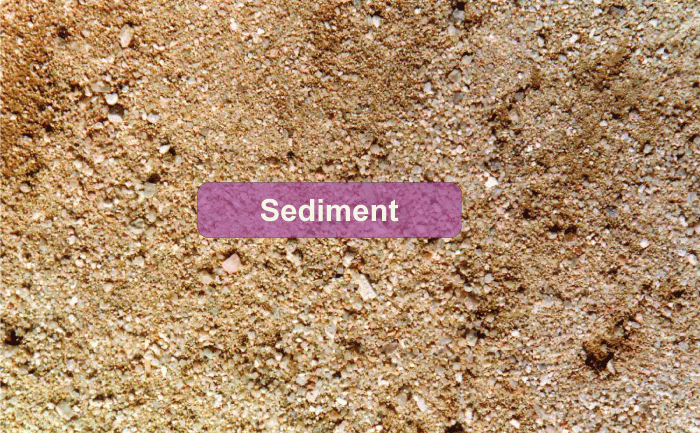
Pebbles and gravel are picked up by flowing water as it travels over land and through creeks, streams, and rivers. These materials are then dumped downstream, particularly in lowland deltas where river mouths open to the ocean. At the base of waterfalls and along riverbanks, sediment is frequently deposited. This sediment, which is transported by water and is rich in nutrients, produces excellent farming conditions. Large chunks of ice called glaciers erode the landscape while transporting sediment as they melt. A moraine is a significant accumulation of sediment that forms into ridges along a glacier's route. Some of these moraines create even lakes. Flow of Sediment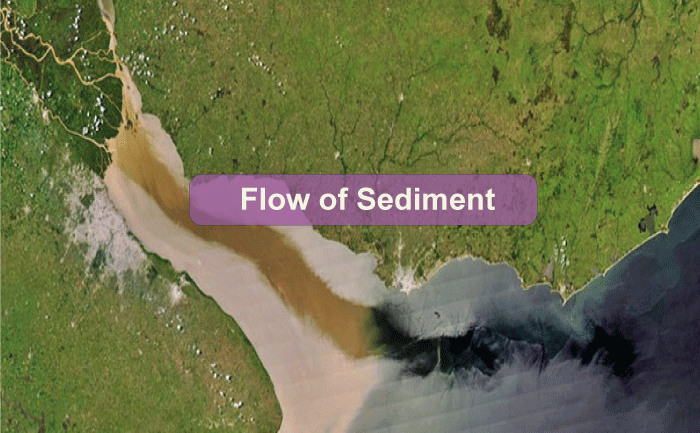
When it flows from Adelaide, Australia's Port River mouth, sediment produces a spiral pattern. Rocks, minerals, and animal and plant remnants can all be found in sediment. Features of Sediment and Sedimentation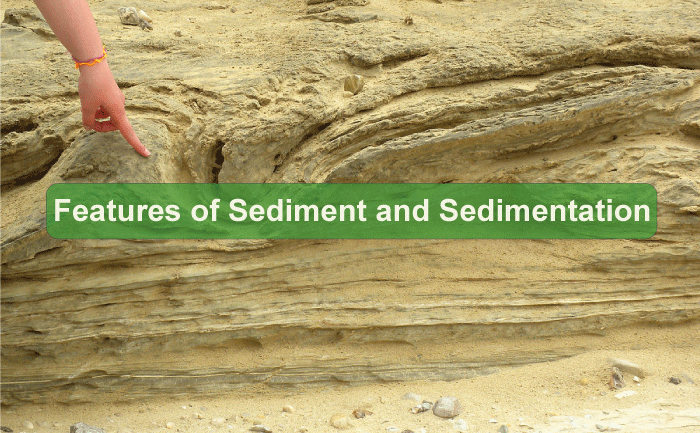
Particle type, particle size, and process of particle production are the three properties of the sediment. How Is Sediment Created?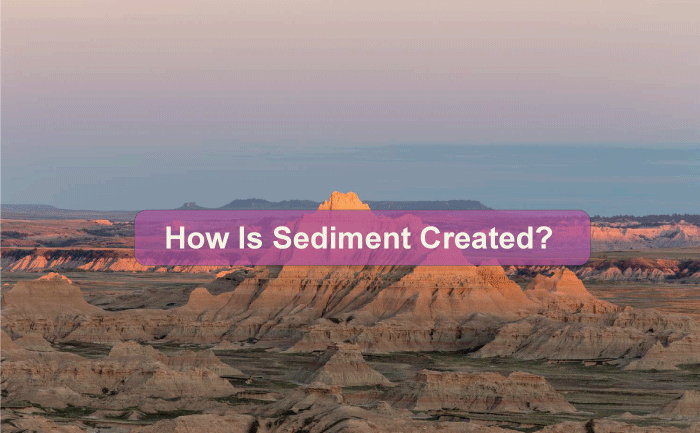
The five processes of weathering, erosion, transportation of sediment, deposition, and lithification have been recognized by geologists as causing the production of deposits. Weathering, which comes in two flavors, physical and chemical, is the initial stage of the process. On the surface of the Earth, weathering frequently breaks down rocks and minerals into smaller fragments. Physical weathering is when rocks and minerals are manually hacked away, frequently by forced expansion. Consider the development of plants within a rock's fracture or water cooling at very high elevations. The plant's roots grow and spread out, forcing the rock's fracture to enlarge so they may enter. Also, as water is frozen, it expands as it transforms from a liquid to a solid, putting more pressure on the rock or mineral to generate additional space for ice forming. Rocks and minerals are also made to expand and disintegrate by the rapid, high heat from a wildfire. The digging that occurs when underground creatures move about is a last example of physical weathering. Examples of sediments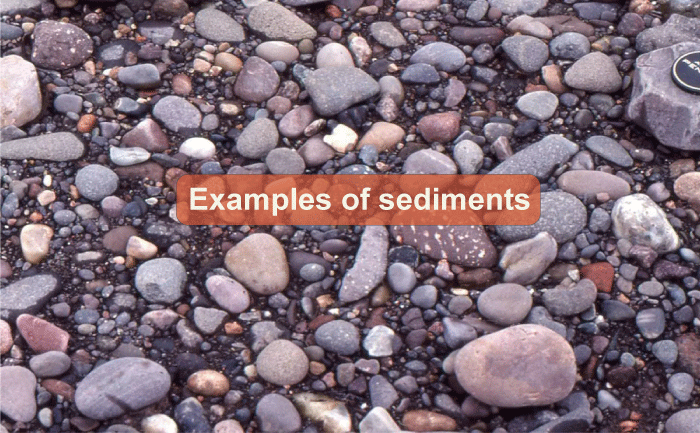
There are many different types of sediment, such as boulders, pebbles, cobbles, sand, silt, and clay. The biggest sizes of sediment include boulders, pebbles, and cobbles, which are all forms of sand. Due to its extremely tiny particle size, clay represents the lowest sediment size. Meaning of Sedimentation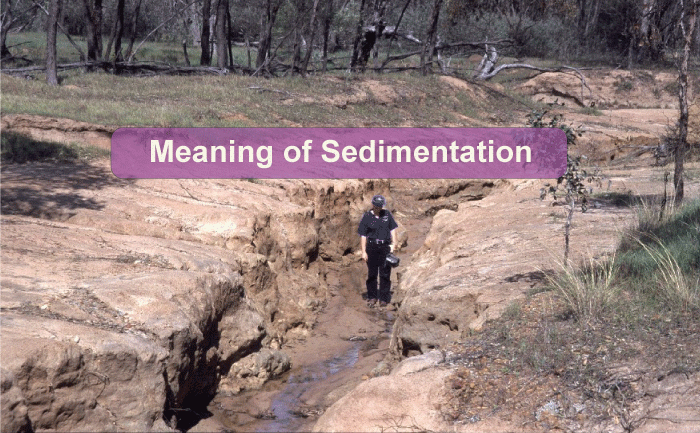
Sedimentation, as previously mentioned, is the process through which transported sediment particles land on the ground, pile up on top of other sediment layers, and finally solidify into sedimentary rocks when water is squeezed out by compaction. Animals and plants, in the process of decomposition, become trapped and eventually become fossilized during the lithification stage. Sedimentation Types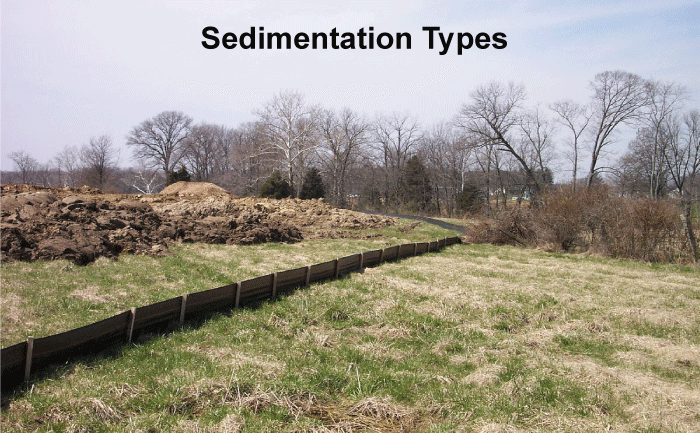
Zone settling, compression settling, discrete settling, and flocculent settling are the primary sedimentation forms. Type of Sedimentation1. Discrete settlement
Without interacting with other particles, each sediment particle finds its way to the Earth's surface. As each sediment particle remains the same size, shape, and weight during this settling process, there is no change in these characteristics. 2. Flocculent settling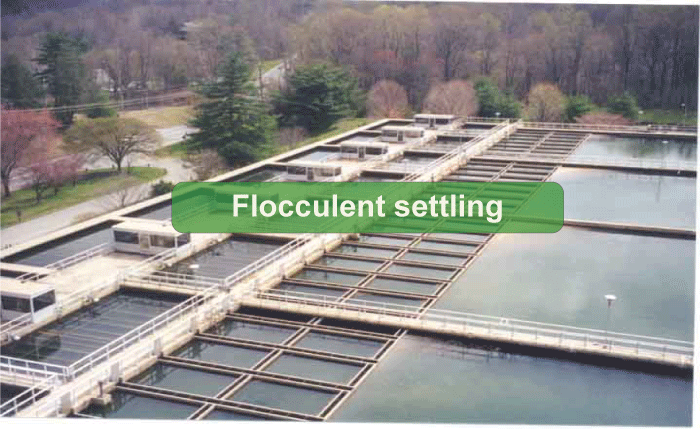
As sediment particles are close to one another, some individual particles may combine as they descend to the ground. The sediment particles fall faster than during discrete settling as they get larger. 3. Zone settling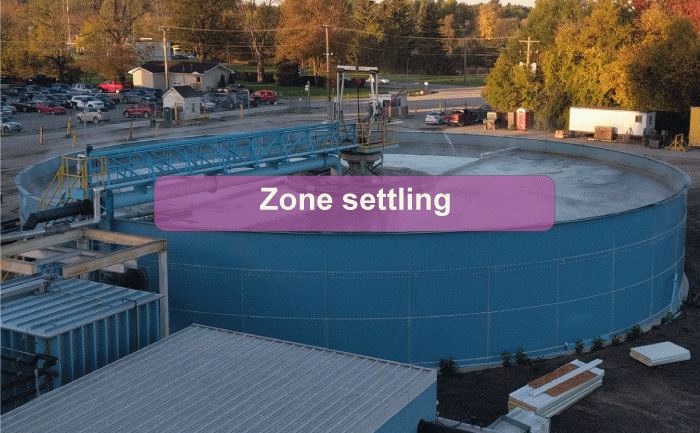
Because of the interactions between the sediment particles, one particle cannot descend more quickly than another. As a result, each sediment particle falls to the Earth at the same frequency and as a single whole. 4. Compression settling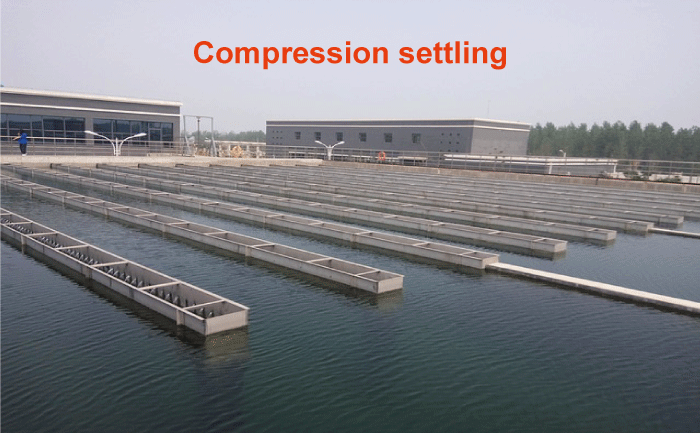
The sediment particles are highly concentrated and touch one another when they descend. Also, when fresh sediment layers are formed, the lower levels help to sustain the weight of the top layers. It should be remembered that each sediment particle may settle discretely and flocculants at a rate that differs from its neighbors. The initial concentration of sediments in the area also affects the settling process. (like a lake or sewage container). During discrete settling and compression settling, the sediment concentration is at its lowest and maximum. Rock of sediment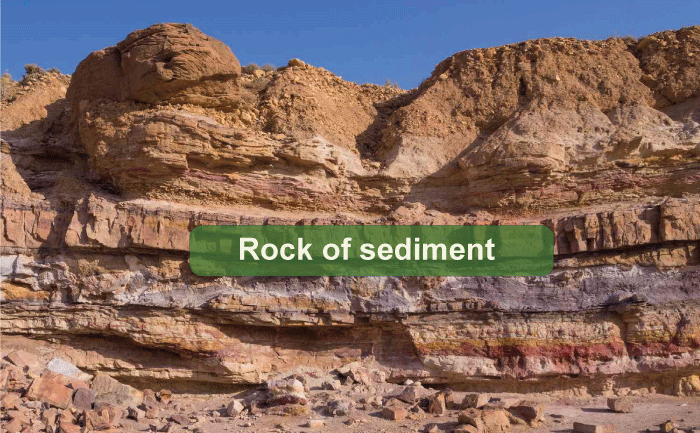
Layers of sediment may collect over millions of years and solidify into sedimentary rock. There are many forms of sedimentary rock, including coal, sandstone, and rock salt. Sandstone is created when sand hardens. Sandstone and sticky cement have been used to produce concrete for years. Many structures, including highways and houses, are constructed with concrete. Rock salt, also known as halite, is created by ocean evaporation. The oceans are made up of salt water. As the water is evacuated, the salt is left behind and evaporates into the sky. In the US state of Utah, there are flat desert areas called the Bonneville Salt Flats covered in a rock salt sediment coating. The area was formerly covered by an ancient sea called Lake Bonneville, which has long since disappeared. Plant debris that has cemented into silt is what makes up coal. Except for Antarctica, coal may be discovered in former marshes and wetlands. Summary of SedimentA substance called sediment settles on Earth's surface and can be eroded by forces to travel to a new location (ice movement, water flow, wind, and gravity). Sediment is formed of pieces of minerals, rocks, and decaying animals and plants. During sediment particle accumulation, different horizontal levels known as strata are created. While the sediment pores are being lithified, these layers are squeezed and become more complicated as water is released. The result is sedimentary rocks, including coal, limestone, sandstone, and shale. Sediments come in three varieties. The clasts that make up clastic sediment, which occurs in various sizes, are grains or bits of minerals and rocks. The cast may be moved further away from the rock or mineral source with less difficulty the smaller it is. The remains of marine animals are known as "biogenic sediment," and they predominantly consist of calcium carbonate and silica from their protecting shells. Bioclastic refers to large biogenic sediment fragments. Ions left over from the evaporation of the water in which they were suspended make up chemical sediment. Evaporites, like rock salt, are a form of chemical sediment.
Next TopicMeningitis Definition
|
 For Videos Join Our Youtube Channel: Join Now
For Videos Join Our Youtube Channel: Join Now
Feedback
- Send your Feedback to [email protected]
Help Others, Please Share










